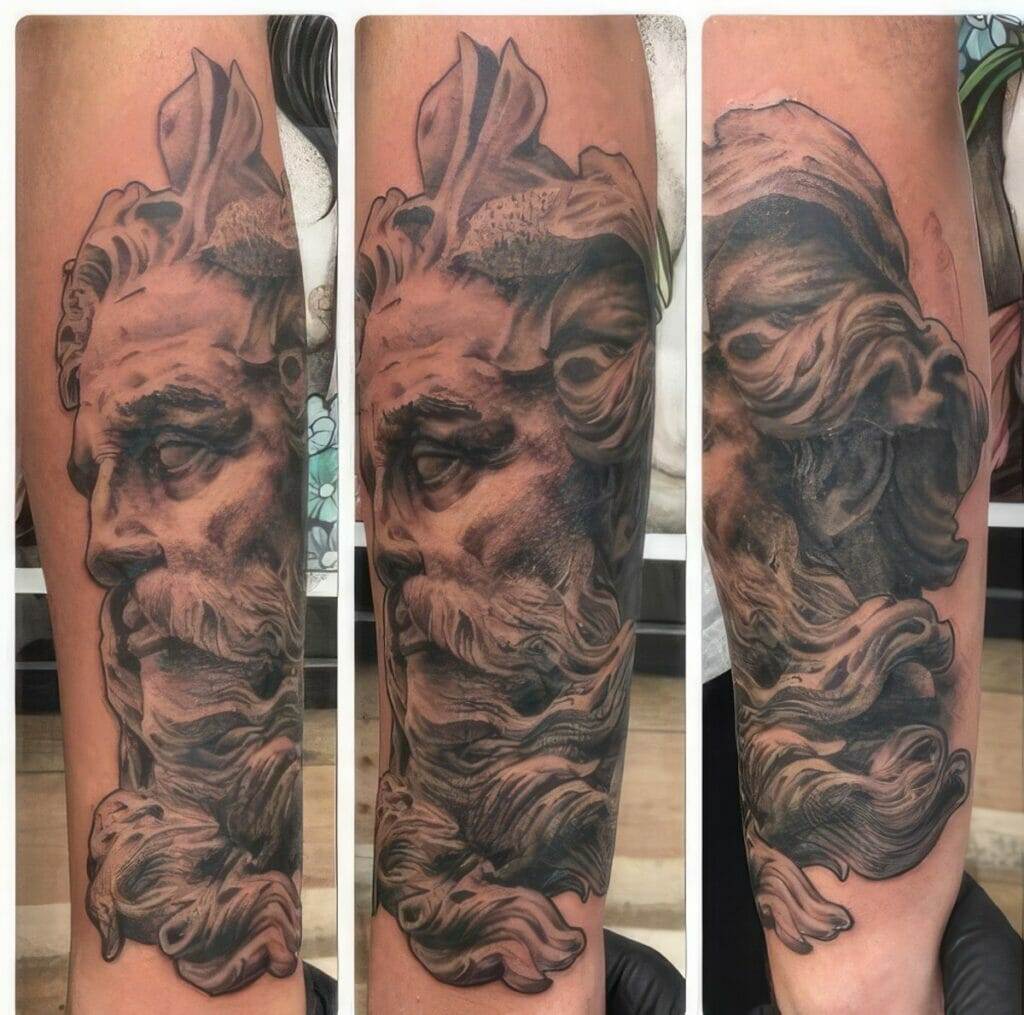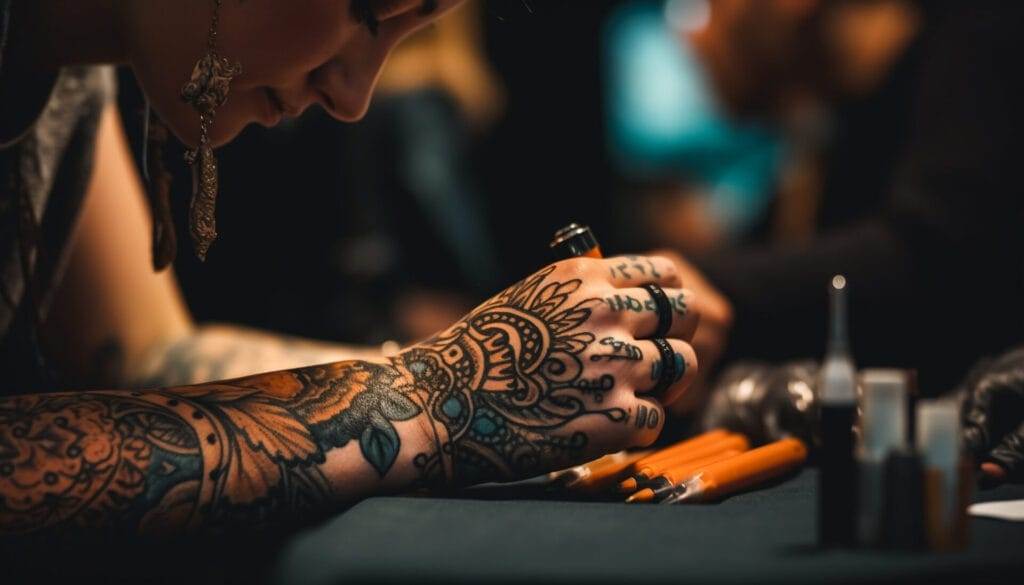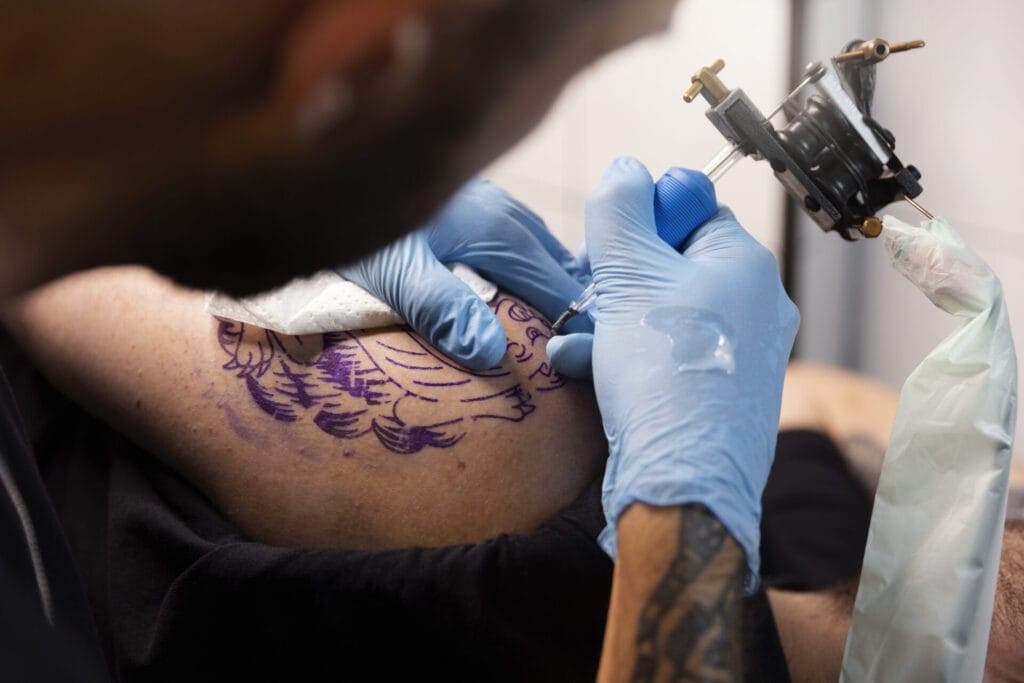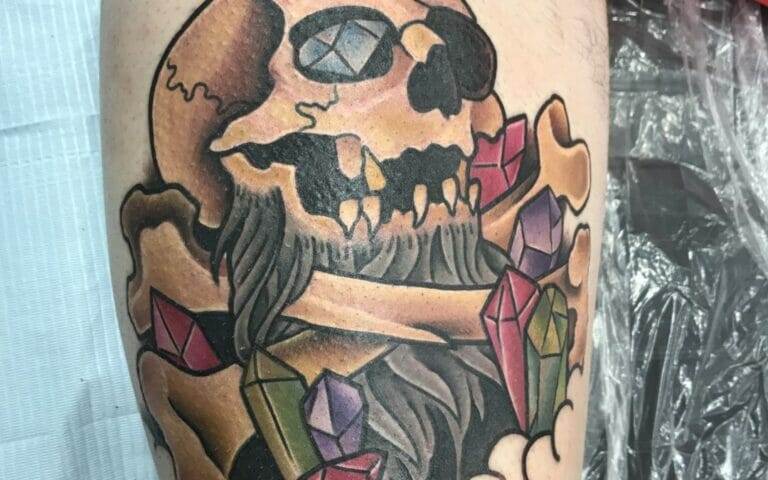
Tattooing is an ancient art form that has been practiced for thousands of years in various cultures around the world. It involves the permanent marking of the skin with ink, creating intricate designs and patterns that hold personal and cultural significance. Tattoos have evolved over time, from simple markings used for identification purposes to elaborate works of art that serve as a form of self-expression.
In different cultures, tattoos have held different meanings and significance. In some societies, tattoos were used to mark individuals as members of a particular tribe or group, while in others they were seen as a form of protection or a way to communicate with the spiritual realm. Today, tattoos are often seen as a way to express one’s individuality and personal beliefs.
The History of Tattooing: From Ancient Times to Modern Day
The history of tattooing dates back thousands of years, with evidence of tattooed individuals found in ancient Egyptian mummies and on the bodies of Ötzi the Iceman, a well-preserved natural mummy from around 3300 BC. Tattoos have been found in various cultures throughout history, including the Polynesians, Native Americans, and Japanese.
In some cultures, tattoos were seen as a rite of passage or a symbol of status. For example, in ancient Egypt, tattoos were often associated with fertility and protection. In Polynesian cultures, tattoos were used to signify social status and achievements. In Japan, tattoos were associated with criminal activity and were used as a form of punishment.
Over time, tattoos have become more mainstream and accepted in many societies. Today, people get tattoos for a variety of reasons, including self-expression, commemoration of loved ones, or simply because they find them aesthetically pleasing.
The Different Styles of Tattooing: Traditional, Realism, Neo-Traditional, and More
There are many different styles of tattooing, each with its own unique characteristics and techniques. Some of the most popular styles include traditional, realism, neo-traditional, and watercolor.
Traditional tattoos, also known as old school tattoos, are characterized by bold lines, bright colors, and iconic imagery such as anchors, roses, and skulls. This style originated in the early 20th century and is heavily influenced by American traditional tattooing.
Realism tattoos aim to create a lifelike representation of a subject, often using shading and intricate details to achieve a three-dimensional effect. This style requires a high level of skill and precision, as the artist must be able to accurately capture the likeness of the subject.
Neo-traditional tattoos are a modern take on traditional tattooing, combining elements of traditional designs with more contemporary techniques and subject matter. This style often features bold lines and vibrant colors, but with a greater emphasis on shading and detail.
Watercolor tattoos are characterized by their soft, flowing lines and vibrant colors that resemble watercolor paintings. This style is relatively new and has gained popularity in recent years for its unique and artistic look.
There are many talented tattoo artists who specialize in each of these styles. Some famous traditional tattoo artists include Sailor Jerry, Don Ed Hardy, and Lyle Tuttle. Realism artists such as Nikko Hurtado and Steve Butcher have gained recognition for their incredibly detailed portraits. Neo-traditional artists like Valerie Vargas and Tim Hendricks are known for their bold yet intricate designs. Watercolor artists such as Amanda Wachob and Ondrash have pushed the boundaries of what is possible with tattooing.
Choosing the Right Design: Finding Inspiration and Creating a Personalized Tattoo
Choosing the right design for your tattoo is an important decision that should not be taken lightly. It’s important to find inspiration for your design and work with a tattoo artist to create something that is unique to you.
There are many ways to find inspiration for a tattoo design. You can look through books and magazines, browse online galleries, or even create a mood board with images and ideas that resonate with you. It’s also a good idea to think about the meaning behind your tattoo and what you want it to represent. This could be a person, a place, an event, or even a quote or symbol that holds personal significance.
Once you have some ideas in mind, it’s time to find a tattoo artist who specializes in the style you are interested in. Look for artists who have a portfolio of work that aligns with your vision and style preferences. It’s also important to meet with the artist in person to discuss your ideas and ensure that you are comfortable working with them.
During the design process, be open to collaboration with your tattoo artist. They are experts in their craft and can offer valuable insights and suggestions to enhance your design. Remember that tattoos are permanent, so it’s important to take your time and make sure you are happy with the final design before getting inked.
Tattoo Placement: Where to Ink Your Legacy

The placement of your tattoo is another important decision to consider. Different areas of the body offer different opportunities for design and visibility, so it’s important to choose a location that suits your personal preferences and lifestyle.
Some popular areas for tattoos include the arms, legs, back, chest, and shoulders. These areas offer a large canvas for larger, more intricate designs. They are also easily visible or can be covered up depending on your preference.
Other areas such as the wrists, ankles, fingers, and neck are more discreet and can be easily covered up if needed. These areas are often chosen for smaller, more delicate designs or symbols that hold personal significance.
When choosing the placement of your tattoo, it’s important to consider factors such as pain tolerance, healing time, and how the tattoo may age over time. Some areas of the body are more sensitive than others and may be more painful to tattoo. It’s also important to consider how the tattoo may stretch or change shape as your body ages or if you gain or lose weight.
Ultimately, the placement of your tattoo should be a personal decision that reflects your individual style and preferences. Take your time to consider all of your options and consult with your tattoo artist for their professional opinion.
The Tattooing Process: What to Expect and How to Prepare
The tattooing process involves several steps, from the initial consultation to the final touch-ups. It’s important to know what to expect and how to prepare for your tattoo session to ensure a smooth and successful experience.
The first step in the tattooing process is the consultation with your tattoo artist. During this meeting, you will discuss your design ideas, placement, and any other details that are important to you. Your artist will also take measurements and create a stencil of the design to ensure proper placement on your skin.
On the day of your tattoo session, it’s important to come prepared. Wear comfortable clothing that allows easy access to the area being tattooed. Avoid wearing tight or restrictive clothing that may rub against the fresh tattoo.
Before getting inked, it’s important to properly care for your skin. This includes avoiding excessive sun exposure, moisturizing regularly, and staying hydrated. It’s also important to avoid alcohol and blood-thinning medications in the days leading up to your tattoo session, as these can increase bleeding during the process.
During the tattooing process, your artist will use a tattoo machine to inject ink into the second layer of your skin. The sensation can vary depending on the location and size of the tattoo, but most people describe it as a mild to moderate discomfort. Your artist will work in small sections, wiping away excess ink and blood as they go.
Once the tattoo is complete, your artist will clean the area and apply a thin layer of ointment or petroleum jelly to help with healing. They will then cover the tattoo with a sterile bandage or plastic wrap to protect it from bacteria and irritation.
The Importance of Proper Aftercare: Keeping Your Tattoo Looking Great for Years to Come
Proper aftercare is crucial for maintaining the quality and longevity of your tattoo. It’s important to follow your artist’s instructions and take steps to ensure that your tattoo heals properly.
In the days following your tattoo session, it’s important to keep the area clean and moisturized. Wash the tattoo gently with mild soap and water, patting it dry with a clean towel. Avoid scrubbing or picking at the tattoo, as this can cause scarring or infection.
Apply a thin layer of ointment or petroleum jelly to the tattoo several times a day to keep it moisturized. Avoid using products that contain alcohol or fragrances, as these can irritate the skin.
It’s also important to avoid exposing your tattoo to excessive sunlight, chlorine, or saltwater during the healing process. These can cause fading or irritation and may prolong the healing time.
As your tattoo heals, it’s normal for it to scab and peel. Do not pick at the scabs, as this can cause scarring or loss of color. Allow the scabs to fall off naturally and continue to moisturize the area as needed.
Tattoo Removal: Exploring Your Options
While tattoos are meant to be permanent, there are options available for those who wish to have their tattoos removed. Tattoo removal methods have come a long way in recent years, offering more effective and less painful options for those seeking to erase their ink.
One of the most common methods of tattoo removal is laser removal. This involves using laser technology to break down the ink particles in the skin, allowing them to be absorbed by the body’s immune system. Laser removal can be effective, but it often requires multiple sessions and can be expensive.
Another option for tattoo removal is surgical excision. This involves cutting out the tattooed skin and stitching the surrounding skin back together. This method is typically used for smaller tattoos and may leave a scar.
There are also topical creams and ointments available that claim to fade or remove tattoos. However, the effectiveness of these products is often questionable, and they may not provide the desired results.
It’s important to consult with a professional tattoo removal specialist to discuss your options and determine the best course of action for your specific tattoo. They can assess the size, color, and location of your tattoo and recommend the most appropriate method for removal.
Tattoo Culture: The Significance of Tattoos in Different Societies and Cultures
Tattoos have held different meanings and significance in various cultures throughout history. In some societies, tattoos were used as a form of identification, marking individuals as members of a particular tribe or group. In others, tattoos were seen as a form of protection or a way to communicate with the spiritual realm.
In Polynesian cultures, tattoos were used to signify social status and achievements. The intricate designs and patterns told the story of an individual’s life and experiences. In Maori culture, facial tattoos known as moko were used to convey information about a person’s genealogy, social status, and achievements.
In Japan, tattoos have a long history and were associated with criminal activity for many years. Today, tattoos are becoming more accepted in Japanese society, but there is still some stigma attached to them. Traditional Japanese tattoos, known as irezumi, are highly detailed and often cover large areas of the body.
In Western cultures, tattoos have become more mainstream and accepted in recent years. They are often seen as a form of self-expression and personal style. Many people choose to get tattoos that hold personal significance or commemorate loved ones.

The Lasting Impact of Tattoo Treasures on Your Life and Legacy
Tattoos have a lasting impact on our lives and legacies. They serve as a form of self-expression, allowing us to showcase our individuality and personal beliefs. They can also serve as reminders of important people or events in our lives.
Tattoos are deeply personal and can hold different meanings for each individual. They can be a source of empowerment, helping us to embrace our bodies and express ourselves authentically. They can also be a way to connect with others who share similar interests or experiences.
In conclusion, tattoos are a powerful form of art and self-expression. They have a rich history and cultural significance that spans across different societies and time periods. Whether you choose to get a tattoo for personal reasons or simply because you find them aesthetically pleasing, they have the power to leave a lasting impact on your life and legacy.









